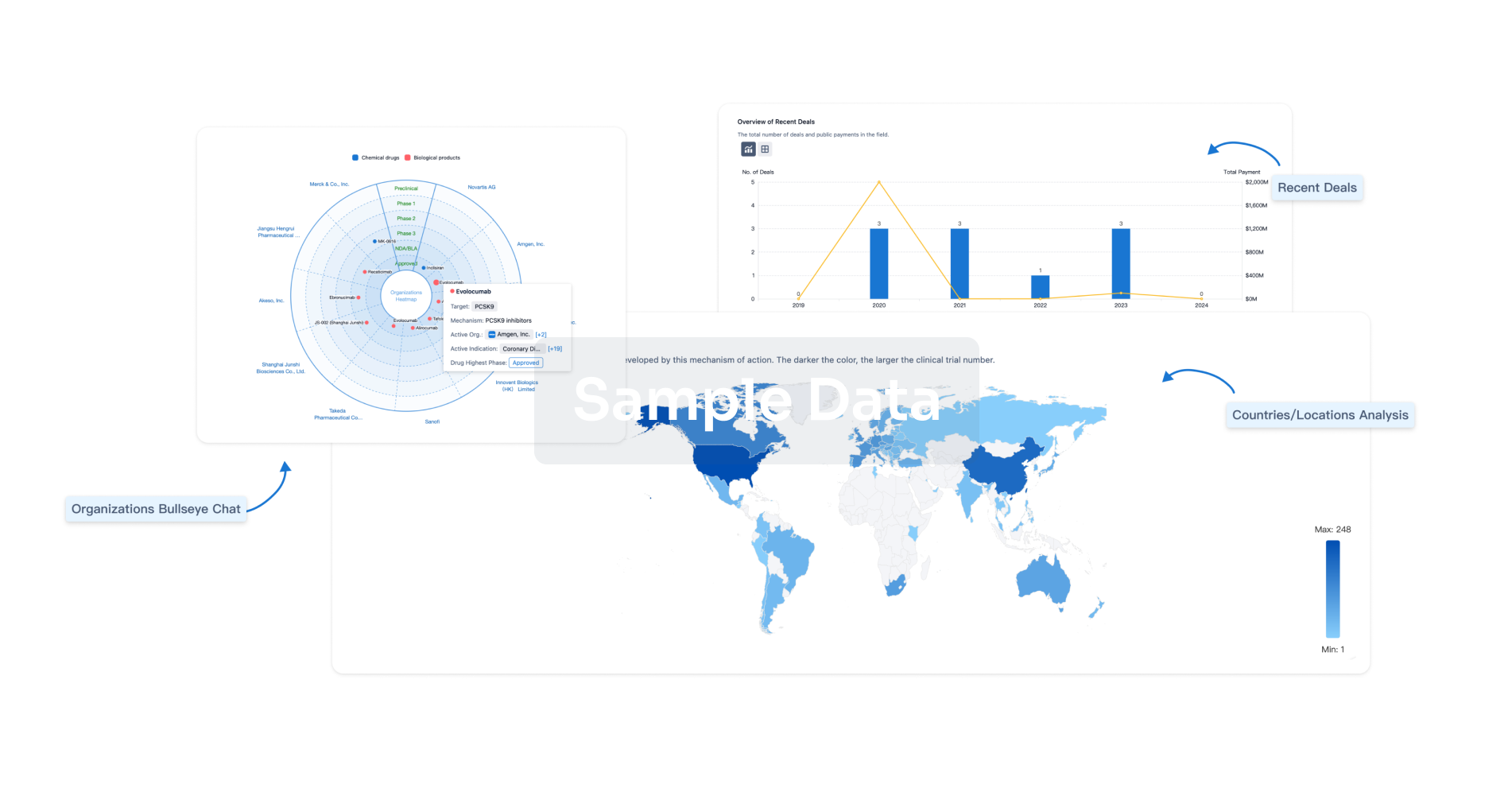Request Demo
Last update 10 Oct 2024
CASC9
Last update 10 Oct 2024
Basic Info
Related Targets |
Related
100 Clinical Results associated with CASC9
Login to view more data
100 Translational Medicine associated with CASC9
Login to view more data
0 Patents (Medical) associated with CASC9
Login to view more data
96
Literatures (Medical) associated with CASC901 Jul 2024·Nanomedicine-Nanotechnology Biology and Medicine
Role of ESCCAL-1 in regulating exocytosis of AuNPs in human esophageal squamous carcinoma cells
Article
Author: Sun, Xiaoyan ; Han, Pengli ; Xia, Tian ; Cui, Yuanbo ; Zhou, Lijuan ; Cao, Wei ; Lv, Pengju ; Liu, Jia ; Gong, Fenfen
Exocytosis is a critical factor for designing efficient nanocarriers and determining cytotoxicity. However, the research on the exocytosis mechanism of nanoparticles, especially the role of long non-coding RNAs (lncRNAs), has not been reported. In this study, the exocytosis of AuNPs in the KYSE70 cells and the involved molecular pathways of exocytosis are analyzed. It demonstrates that nanoparticles underwent time-dependent release from the cells by exocytosis, and the release of β-hexosaminidase confirms that AuNPs are excreted through lysosomes. Mechanistic studies reveal that lncRNA ESCCAL-1 plays a vital role in controlling the exocytosis of AuNPs through activation of the MAPK pathway, including the phosphorylation of ERK and JNK. The study implies that the ESCCAL-1-mediated pathway plays an important role in the exocytosis of AuNPs in KYSE70 cells. This finding has implications for the role of ESCCAL-1 on the drug resistance of esophagus cancer by controlling lysosome-mediated exocytosis.
01 Jun 2024·Heliyon
Abnormal activation of genomic LINE1 elements caused by DNA demethylation contributes to lncRNA CASC9 overexpression in esophageal squamous cell carcinoma
Article
Author: Bai, Yun ; Chen, Xuedan ; Li, Juan ; Guan, Xingying ; Wang, Kai
Long noncoding RNA (lncRNA) cancer susceptibility 9 (CASC9) has been found to be overexpressed and functions as an oncogene in many cancer types. We investigated the molecular mechanism underlying CASC9 overexpression in esophageal squamous cell carcinoma (ESCC). Transcripts containing exons 2 and 6 and exons 4 and 6 showed the highest CASC9 expression levels in ESCC, no transcripts were detected in the normal esophageal epithelial Het1A cell line. The Long Interspersed Nuclear Element-1 (LINE1 or L1) element in the genome was found to participate in the evolution of lncRNA CASC9, the antisense promoter (ASP) of L1 provides the cis-regulatory elements necessary for CASC9 activation, and the antisense chain of L1 participates in the formation of exons of CASC9. The activation of the antisense promoter was due to the aberrant hypomethylation of L1 elements. An active enhancer element was identified in the downstream region of CASC9 gene by ChIP-seq and ChIP-qPCR. The interaction between ASP and the enhancer elements was confirmed by chromosome conformation capture (3C). Thus, our results suggest that the L1 ASP activation due to aberrant hypomethylation and downstream enhancer interaction plays a key role in the overexpression of lncRNA CASC9 in ESCC.
01 Nov 2023·Cytokine
LncRNA CASC9 enhances the stability of SOCS-1 by combining with FUS to alleviate sepsis-induced liver injury
Article
Author: Chen, Shiyi ; Bai, Jinquan
BACKGROUND:
Liver injury plays a major role in the development of sepsis. Liver damage after sepsis is an independent risk factor for multiple organ failure and death. Cancer susceptibility candidate 9 (CASC9) exerts a protective effect on sepsis-induced acute lung injury (ALI). However, the role and underlying mechanism haven't been fully evaluated.
METHODS:
Animal and cell models of sepsis were established in vivo and in vitro experiments. The histological and apoptosis analyses of liver tissues were tested by hematoxylin-eosin (HE) staining and terminal dUTP nick end labeling (TUNEL) assay, respectively. Serum levels of inflammatory cytokines were detected via using an enzyme-linked immunosorbent assay (ELISA). The expressions of CASC9, suppressor of cytokine signaling (SOCS)-1, Bcl-2, Bax, Bad, and caspase3 were measured by reverse-transcription quantitative polymerase chain reaction (RT-qPCR) and western blotting. Cell counting kit-8 (CCK-8) and flow cytometry were applied to examine cell viability and apoptosis, respectively. RNA immunoprecipitation (RIP) and RNA-pull down assay were used to verify the binding relationships among CASC9, SOCS-1 and FUS.
RESULTS:
CASC9 and SOCS-1 were lowly expressed in animal and cell models of sepsis liver injury. CASC9 or SOCS-1 overexpression could inhibit cell apoptosis upon lipopolysaccharide (LPS) induction. Meanwhile, the serum levels of tumor necrosis factor-α (TNF-α), interleukin (IL)-1β, IL-6 and IL-8 were reduced by CASC9 or SOCS-1 overexpression in LPS-induced LO2 cells. Mechanistically, CASC9 interacted with fused in sarcoma (FUS) to stabilize the mRNA of SOCS-1. SOCS-1 silencing antagonized the effects of CASC9 on improving sepsis liver injury.
CONCLUSION:
CASC9 overexpression ameliorated the sepsis-induced liver injury, and the probable underlying mechanism may be that CASC9 stabilized the SOCS-1 mRNA by interacting with FUS.
Analysis
Perform a panoramic analysis of this field.
login
or

AI Agents Built for Biopharma Breakthroughs
Accelerate discovery. Empower decisions. Transform outcomes.
Get started for free today!
Accelerate Strategic R&D decision making with Synapse, PatSnap’s AI-powered Connected Innovation Intelligence Platform Built for Life Sciences Professionals.
Start your data trial now!
Synapse data is also accessible to external entities via APIs or data packages. Empower better decisions with the latest in pharmaceutical intelligence.
Bio
Bio Sequences Search & Analysis
Sign up for free
Chemical
Chemical Structures Search & Analysis
Sign up for free